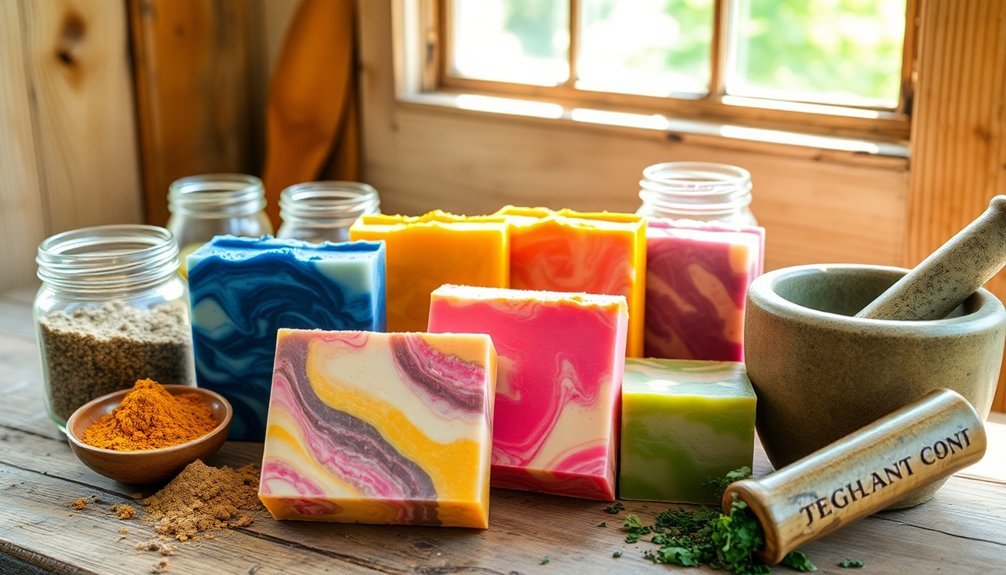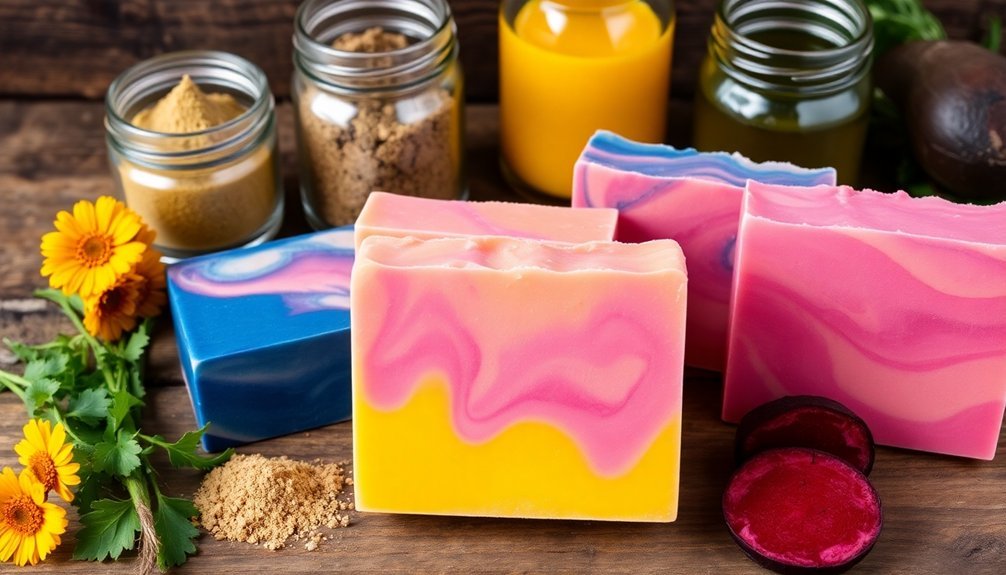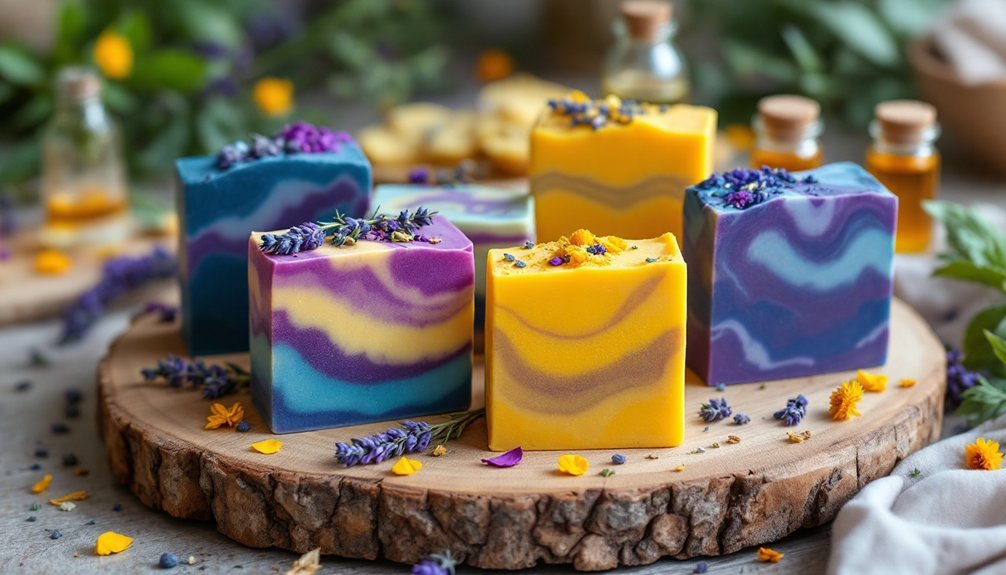For gorgeous handmade soaps, try these three plant-based dyes: madder root for pink to red tones (use 3 grams per pound), annatto seeds for vibrant orange (easily mixed into oils or lye solution), and turmeric for brilliant yellow with added skin benefits. Each natural colorant creates stunning hues without synthetic chemicals while contributing valuable skincare properties. Proper incorporation techniques guarantee your colors won't bleed or fade, elevating your soap crafting to an art form.
Understanding Plant Pigments: The Science of Natural Soap Coloration

While synthetic dyes may offer consistency, the rich world of plant pigments provides both visual appeal and skincare benefits in handmade soaps.
Natural pigments consist of insoluble particles that create deep colors without bleeding when properly incorporated.
When working with plant-based colorants like madder root for reds or turmeric for yellows, you'll notice color intensity varies with your soap making method. Cold process soap requires precise mixing techniques to achieve your desired shade, as the alkaline environment can alter pigments.
Beyond aesthetics, these natural soap colorants contribute valuable skincare properties that synthetic alternatives can't match.
Before committing to a full batch, try testing small batches to determine how your chosen pigments will behave. This helps prevent fading and guarantees your beautiful hues remain stable despite light exposure.
Top Plant-Based Dyes for Vibrant, Long-Lasting Soap Colors
Armed with an understanding of natural pigment science, let's explore the most effective plant-based colorants for your soap creations.
Madder Red soap stands out for its stunning pink-to-red spectrum, with just 3 grams per pound coloring over 9 pounds of soap without fading.
For vibrant orange, incorporate annatto seeds directly into your lye solution or oil base—they're exceptionally easy to work with in cosmetic products.
Turmeric delivers a brilliant yellow that also offers skin benefits, making it a dual-purpose natural colorant.
If you're seeking purple hues, alkanet and gromwell roots are your best options, though the dye may result in more muted tones that deepen during curing.
Using these plant-based natural dyes in your soap not only creates beautiful colors but eliminates synthetic chemicals for a healthier product.
Techniques for Incorporating Plant Dyes Into Your Soap Making Process

Once you've selected your plant-based colorants, mastering proper incorporation techniques will determine your soap's final appearance. For vibrant colors, measure the recommended amount of dye—typically 3 grams per pound of soap, though darker shades like Indigo Green need just 1 gram.
Create a smooth slurry by mixing your natural dye with distilled water (1 teaspoon per gram) and let it rest 10-20 minutes before adding to your soap batter. For best results, dissolve pigment-based dyes directly in your lye water solution before adding the lye solution to oils, ensuring even color distribution without speckles.
Always wear a mask when handling dry pigments during this process.
Store finished soaps away from direct sunlight to preserve their beautiful hues, as natural colorants may fade over time.
Frequently Asked Questions
What Is the Best Dye for Soap?
For the best soap dye, you'll want plant-based options like Madder Red, Weld Yellow, or Maya Blue. They're vibrant, skin-friendly, and chemical-free. Remember to store your soaps away from sunlight to prevent fading.
How to Get Vibrant Colors in Soap?
To get vibrant colors in soap, you'll need to use 3 grams of dye powder per pound of soap. Create a thick slurry with distilled water first, and consider plant-based options like madder root or turmeric.
What Are the Best Natural Pigments for Soap?
You'll get vibrant soap colors with madder root (red), turmeric (yellow), annatto seeds (orange), and alkanet root (purple). Use these natural pigments at maximum 5% of total soap weight for best results.
What Is the Natural Purple Color for Soap Making?
You'll find alkanet root and gromwell root are excellent natural purple colorants for your soap. They're best used at about 3 grams per pound of soap and should be kept away from direct sunlight.
In Summary
You've now discovered the beauty of natural color in your handmade soaps. By understanding plant pigment science and mastering these three natural dyes, you're creating products that are both visually stunning and skin-friendly. Don't be afraid to experiment with different concentrations and combinations. Your creative journey with plant-based colorants doesn't end here—it's just beginning to bloom!





Leave a Reply